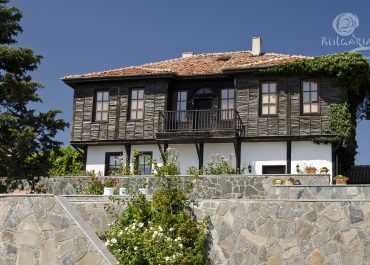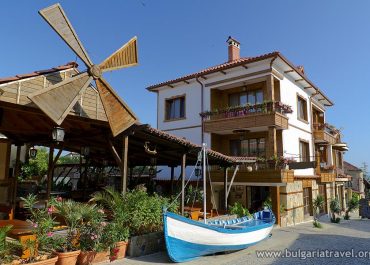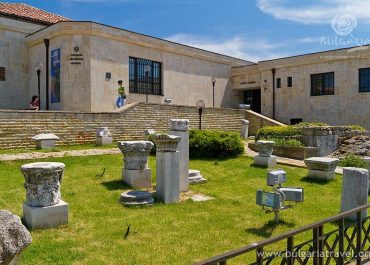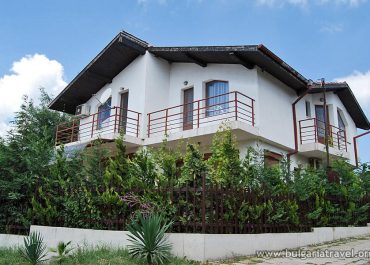
Ropotamo – reservation
The Ropotamo Reservation is situated at a distance of about 50 km south from Burgas, on the territory of the Municipality of Primorsko. It is situated around the two banks of Ropotamo river. The river current passes by large sand dunes before its flowing into the Black Sea.
The locality was declared a protected territory in 1940, and in 1992 it was broadened and declared a reservation with a total area of 1,000.7 ha.
There are multiple interesting and unique natural sites on the reservation territory – a firth part and an inlet terrace of the Ropotamo river with natural dense forests, natural sand dunes and a beach stripe, broad-leaved forests with Mediterranean elements. A deposit of Artemisia maritima is also found here. The Arkutino swamp is also situated within the reservation borders. Some of the species that grow there are Nymphaea alba, Lemnaoideae, Nuphar lutea, reed, rush and bulrush.
Part of the reservation is the rock formations “The lion head”, the “Joyful rock”, as well as the St. Roma island, also known as the Snake Island.
The fauna in the Ropotamo reservation is presented by 21 mammal species, such as wild boar (Sus scrofa), doe (Capreolus capreolus), deer (Cervus elaphus), jackal (Canus aureus), fox (Vulpes vulpes), marten (M. martes), otter (Lutra lutra), and more than 10 species of bats, 260 bird species, among which: white stork (C.Ciconia), sea eagle (Haliaeetus albicilla) and semi-whiteneck fly-catcher (Ficedula semitorquata), various species of herons, ducks, small cormorant (Ph. Pygmeus). 23 amphibian species are also found here – Pelobates syriacus, Bufo Bufo, Bufo viridis, Hyla arborea; 9 reptile species – Coluber rubriceps, Elaphe situla, Elaphe longissima, water snakes (Natrix), turtle species: Testudo graeca, T.Hermanni and Emys orbicularis and about 50 fish species –Mugil cephalus, Atherina boyeri, Neogobius melanostomus, Anguilla anguilla, Knipowitschia caucasica, Gasterosteidae, etc.
In order to protect this unique territory, in 2002 it was declared Ramsar area No 65 (declared on 24 September 1975 for the Arkutino region and broadened on 24 September 2002, called Ropotamo Complex, with a total area of 5,500 ha).
The new complex includes various categories of protected areas – maintained reservation Velyov Vir, protected area Stamopolu Swamp, natural landmarks Alepu Swamp, Maslen Nos, Sand Dunes in the locality of Perla and Sand Dunes in the locality of Alepu.
The locality is a shelter for many species of national and international significance, among which 7 globally endangered bird species, 2 plant species, 8 spineless animals, and 7 mammals. 5 Bulgarian and 12 Balkan endemites and 22 relict species have been found.
Any kind of human activity is forbidden in the reservation, excluding its guarding, scientific visits and passing of people along the marked paths. The reservation visits are performed only along the 8 determined paths, marked for crossing by visitors. All land and water routes are marked by indicative board signs and information boards.
One can reach the reservation by following the main road from Burgas to Tsarevo.
Tourist information center – Primorsko
Treti Mart 56 str.
Tel .: +359 0550 3 24 66
E-mail: tic_primorsko@abv.bg
Тhe Regional Inspectorate of Environment and Waters – Burgas
67 Perushtitsa Str., City of Burgas
Tel: +359 56 813205
E-mail: riosvbs@unacs.bg
Website: http://riosvbs.com/
The Ropotamo Reservation is situated at a distance of about 50 km south from Burgas, on the territory of the Municipality of Primorsko. It is situated around the two banks of Ropotamo river. The river current passes by large sand dunes before its flowing into the Black Sea.
The locality was declared a protected territory in 1940, and in 1992 it was broadened and declared a reservation with a total area of 1,000.7 ha.
There are multiple interesting and unique natural sites on the reservation territory – a firth part and an inlet terrace of the Ropotamo river with natural dense forests, natural sand dunes and a beach stripe, broad-leaved forests with Mediterranean elements. A deposit of Artemisia maritima is also found here. The Arkutino swamp is also situated within the reservation borders. Some of the species that grow there are Nymphaea alba, Lemnaoideae, Nuphar lutea, reed, rush and bulrush.
Part of the reservation is the rock formations “The lion head”, the “Joyful rock”, as well as the St. Roma island, also known as the Snake Island.
The fauna in the Ropotamo reservation is presented by 21 mammal species, such as wild boar (Sus scrofa), doe (Capreolus capreolus), deer (Cervus elaphus), jackal (Canus aureus), fox (Vulpes vulpes), marten (M. martes), otter (Lutra lutra), and more than 10 species of bats, 260 bird species, among which: white stork (C.Ciconia), sea eagle (Haliaeetus albicilla) and semi-whiteneck fly-catcher (Ficedula semitorquata), various species of herons, ducks, small cormorant (Ph. Pygmeus). 23 amphibian species are also found here – Pelobates syriacus, Bufo Bufo, Bufo viridis, Hyla arborea; 9 reptile species – Coluber rubriceps, Elaphe situla, Elaphe longissima, water snakes (Natrix), turtle species: Testudo graeca, T.Hermanni and Emys orbicularis and about 50 fish species –Mugil cephalus, Atherina boyeri, Neogobius melanostomus, Anguilla anguilla, Knipowitschia caucasica, Gasterosteidae, etc.
In order to protect this unique territory, in 2002 it was declared Ramsar area No 65 (declared on 24 September 1975 for the Arkutino region and broadened on 24 September 2002, called Ropotamo Complex, with a total area of 5,500 ha).
The new complex includes various categories of protected areas – maintained reservation Velyov Vir, protected area Stamopolu Swamp, natural landmarks Alepu Swamp, Maslen Nos, Sand Dunes in the locality of Perla and Sand Dunes in the locality of Alepu.
The locality is a shelter for many species of national and international significance, among which 7 globally endangered bird species, 2 plant species, 8 spineless animals, and 7 mammals. 5 Bulgarian and 12 Balkan endemites and 22 relict species have been found.
Any kind of human activity is forbidden in the reservation, excluding its guarding, scientific visits and passing of people along the marked paths. The reservation visits are performed only along the 8 determined paths, marked for crossing by visitors. All land and water routes are marked by indicative board signs and information boards.
One can reach the reservation by following the main road from Burgas to Tsarevo.
Tourist information center – Primorsko
Treti Mart 56 str.
Tel .: +359 0550 3 24 66
E-mail: tic_primorsko@abv.bg
Тhe Regional Inspectorate of Environment and Waters – Burgas
67 Perushtitsa Str., City of Burgas
Tel: +359 56 813205
E-mail: riosvbs@unacs.bg
Website: http://riosvbs.com/
Virtual map
Photos
© All images, advertising and video materials and/or other information published on this website are property of the Ministry of Tourism and are protected by the Law on Copyright and Related Rights, according to the Bulgarian laws to all applicable international and relevant acts of the European Union.





